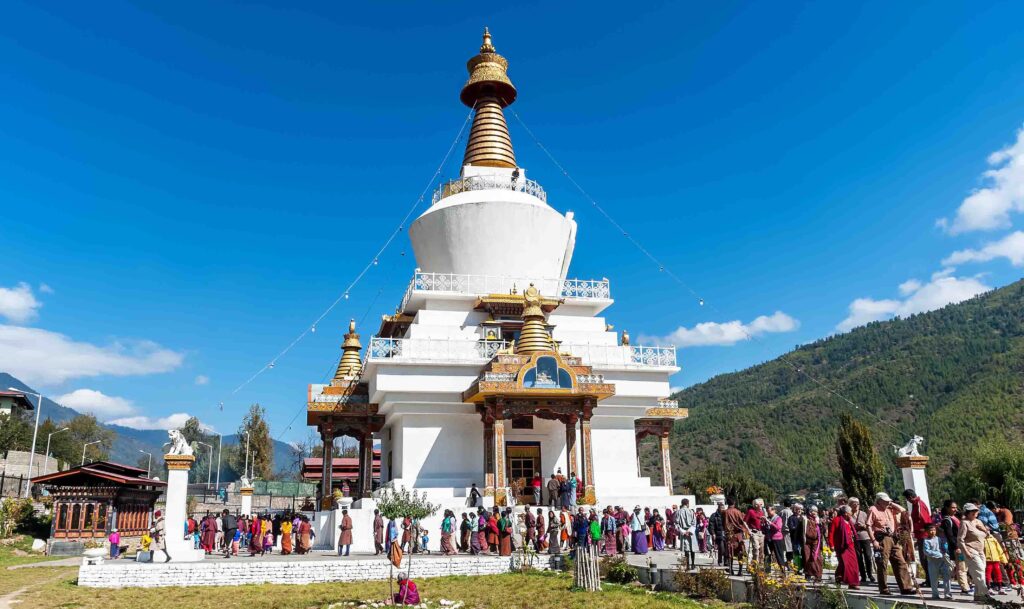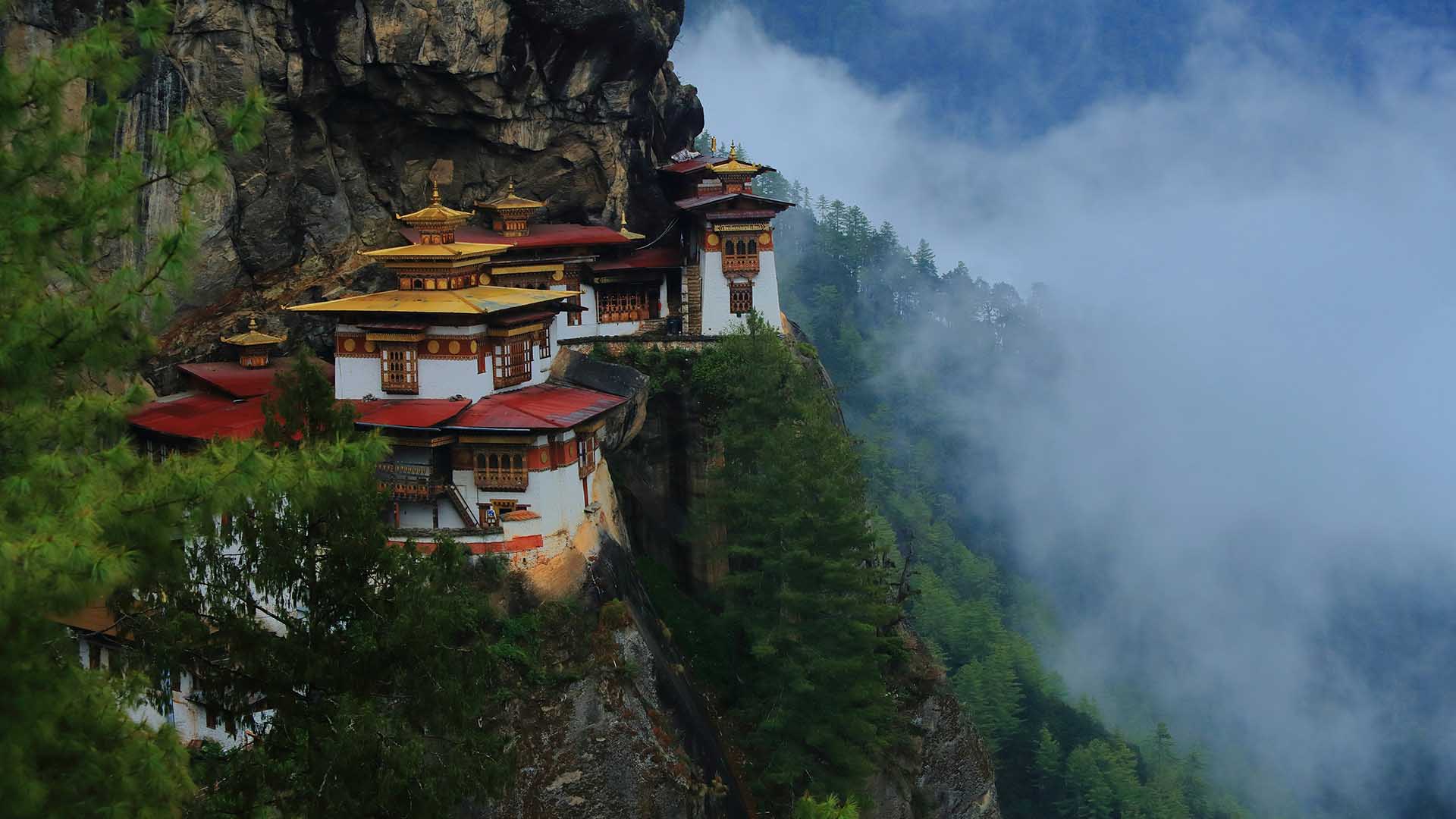01 Aug The Memorial Stupa, Thimphu: A Tribute to Bhutan’s Third King
The Memorial Stupa, also known as Thimphu Chorten, is one of the most prominent religious landmarks in Thimphu, Bhutan. Located on Doeboom Lam in the southern-central part of the city, near the main roundabout and Indian military hospital, this stupa was built in 1974 to honor the third Druk Gyalpo, Jigme Dorji Wangchuck. With its golden spires and intricate design, the Memorial Stupa stands as a symbol of Bhutan’s spiritual heritage.

Historical Background
The Memorial Stupa was conceived by Thinley Norbu Rinpoche, following the Nyingma tradition of Tibetan Buddhism, to commemorate the memory of Jigme Dorji Wangchuck, who passed away in 1972. The main patron of this sacred structure was the Druk Gyalpo’s mother, Phuntsho Choden. Unlike other stupas that often enshrine human remains, this chorten does not house any relics but instead features a photo of the third king in ceremonial dress on the ground floor. Jigme Dorji Wangchuck had expressed a desire to build a chorten representing the mind of the Buddha, which inspired the creation of this landmark.
Architecture and Design
The Memorial Stupa is designed in the Tibetan style, specifically as a Jangchup Chorten, which is a classical stupa form. The structure features a white exterior with a golden spire that is crowned by a crescent moon and sun. A unique architectural feature of this stupa is the outward flaring of its rounded base, giving it a vase-like shape rather than the traditional dome. The stupa is adorned with large, life-sized images of wrathful deities and their female consorts, many depicted in Yab-Yum (sexual union) poses, a common theme in Vajrayana Buddhism symbolizing the union of wisdom and compassion.
Exterior Features
The Memorial Stupa is surrounded by a small garden and is accessed through a gate decorated with three slate carvings. The exterior of the gate features the three protective bodhisattvas—Avalokiteśvara (symbolizing compassion), Mañjuśrī (symbolizing knowledge), and Vajrapāṇi (symbolizing power). Inside the gate, slate engravings depict figures such as Ngawang Namgyal, Gautama Buddha, and Padmasambhava. Large prayer wheels are also positioned to the left of the entrance, and the chorten itself is a focal point for daily worship, particularly for elderly Bhutanese who come to circumambulate the stupa, spin the prayer wheels, and offer prayers.
Interior Layout
The interior of the Memorial Stupa is richly decorated, with annexes facing the four cardinal directions, containing mandalas, statues, and a shrine dedicated to the third king. The ground floor is dedicated to the teachings of Vajrakīlaya, featuring four shrines with images of the king and an eastern shrine housing a Buddha image. A staircase from the ground floor leads to two additional floors, each containing four shrines and a large central wooden carving depicting wrathful protective deities. The second floor focuses on the teachings of the Drukpa Lineage of the Kagyu school, while the top floor is dedicated to Lama Gongdü’s teachings. These teachings form the esoteric doctrine of the Nyingmapa sect, with texts that were once hidden by Padmasambhava and later rediscovered by tertöns.
The top floor also features paintings of various deities from the Nyingma school, and a gallery above offers a panoramic view of Thimphu city.
Religious Practices and Festivals
The Memorial Stupa is a site of great religious significance, where devotees circumambulate in a clockwise direction, reciting prayers and spinning the large red prayer wheels. This practice is a common tradition for all religious structures in Bhutan. The Monlam Prayer Festival, an important religious event, is held at the stupa, during which the Je Khenpo, Bhutan’s religious head, addresses and blesses the congregants.


Sorry, the comment form is closed at this time.